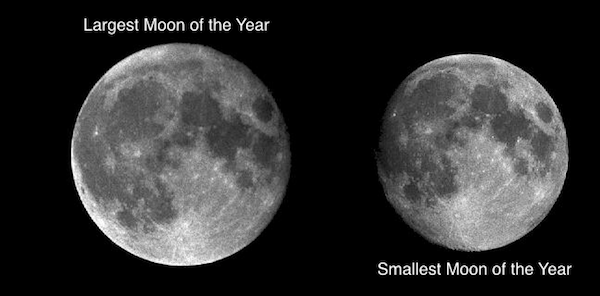Go Outside And Look At The Smallest Moon Of The Year!

Last night (January 15th 2014), the full Moon coincided with the lunar apogee. The Moon’s apogee is the point in its orbit when it is farthest from the earth. The point at which the Moon is closest to the earth is called the perigee.
How much smaller (in diameter) did the moon appear to us last night than it did at the last perigee?
- The distance to the Moon at the most recent perigee was about 356,900 km.
- Last night at apogee, the moon was about 406,500 km away.
This section requires Javascript.
You are seeing this because something didn't load right. We suggest you, (a) try
refreshing the page, (b) enabling javascript if it is disabled on your browser and,
finally, (c)
loading the
non-javascript version of this page
. We're sorry about the hassle.
(406500-356900)/406500 x 100% = 12.2%